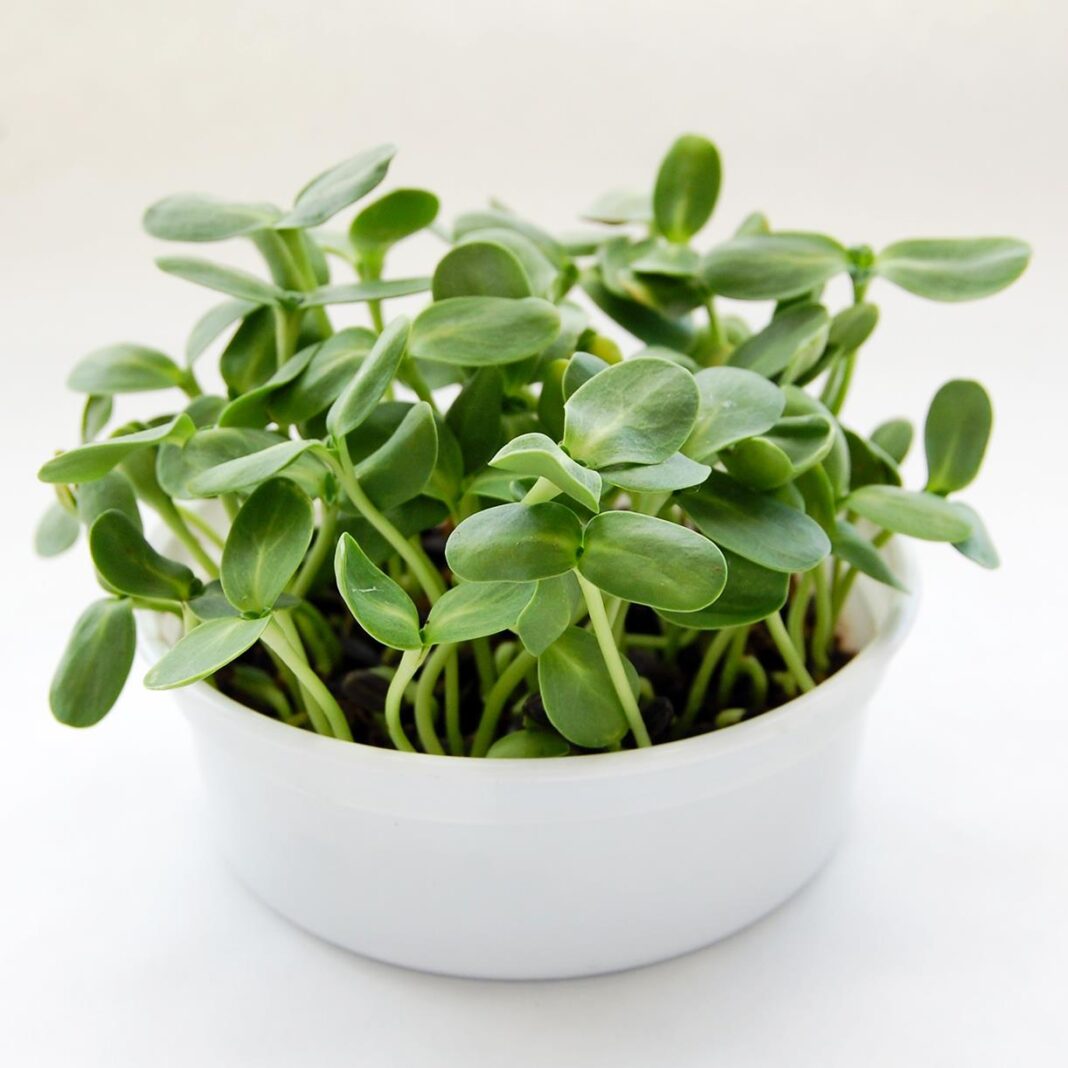Have fun growing some delicious and nutritious microgreens on your kitchen counter, in a sunny window, or under lights any time of the year. In as little as a week to ten days you’ll be making your first harvest to use as a garnish, snack, or add to your favorite sandwich or salad.
Simply purchase seeds of lettuce, greens, mustard, radishes, beets, peas, and even sunflowers. Buy organic seeds or those labeled for sprouting or use as microgreens to ensure they have not been treated with harmful chemicals. Or purchase a microgreen kit that contains all you need to get started.
You can grow any microgreens in soil and most hydroponically. Sunflowers, peas, buckwheat, chard, beets, and cilantro grow best in soil. Soak the seeds in cold water for 12 to 24 hours for faster and greater sprouting. Plant the seeds in a shallow container with drainage holes filled with a moist well-drained planting or seed starting mix. Gently tamp the planting mix to remove air pockets and create a flat surface for planting. Mist the soil surface and evenly sprinkle the seeds over the soil. Gently tamp the seeds or mist them to ensure good seed-to-soil contact. Planting seeds this way makes harvesting a bit less messy. Or you can lightly cover the seeds with soil.
Use a fast food container you’ve cleaned and added drainage holes to or invest in a kit like True Leaf Market’s Organic Mini Microgreens Kit to get your microgreens off to a great start. Then make additional plantings every few weeks to have a constant supply of fresh microgreens to enjoy.
Set the container on a tray to protect the surface below. Once planted, cover the container with a lid to boost humidity and reduce the need to water. Some gardeners use an opaque cover to trap humidity and keep the seeds in the dark for sprouting. Check soil moisture daily and spritz with water as needed. Remove the cover in two or three days once the sprouts break through the soil. Then move it to a bright location or under artificial lights.
Or skip the planting media and go hydroponic using a growing pad instead. This makes harvesting clean and easy and works well for broccoli, kale, arugula, cabbage, cauliflower, mustard, and radish seeds.
Cut the grow pad made of jute, bamboo, or similar material to fit the container as needed. Thoroughly moisten the grow pad fabric. Sprinkle the seeds evenly over the pad’s surface, leaving about twice the size of a seed between each. Use a spray bottle to water and firm the seeds in place.
Use an opaque cover over the top of the tray to provide the needed darkness for the seeds to sprout. Check the seeds twice a day and mist them as needed. Remove the cover in three to five days once the seeds sprout and start growing. Move the sprouts into a bright location, a sunny window, or under artificial lights, and continue to water as needed.
Your microgreens are ready to harvest when the microgreens are two to four inches tall and the first set of true leaves – those that resemble the leaves of the mature plant – are just starting to emerge. This is usually seven to ten days but may be longer depending on the seeds you grow. Use a sharp knife or scissors to cut the greens about ¼” above the soil or grow pad. Gently rinse and spin dry the greens and enjoy.
Have fun as you grow a variety of microgreens to enjoy and share with friends and family.
Melinda Myers has authored over 20 gardening books, including Small Space Gardening and Midwest Gardener’s Handbook, 2nd Edition. She hosts The Great Courses “How to Grow Anything” instant video and DVD series and Melinda’s Garden Moment TV & radio program. Myers is a columnist and contributing editor for Birds & Blooms magazine and was commissioned by True Leaf Market for her expertise in writing this article. Her website is www.MelindaMyers.com.






